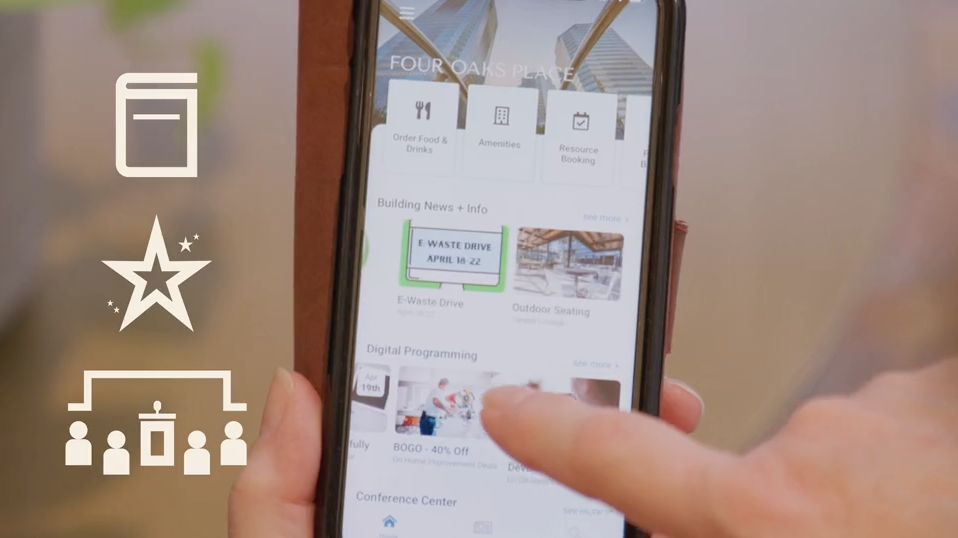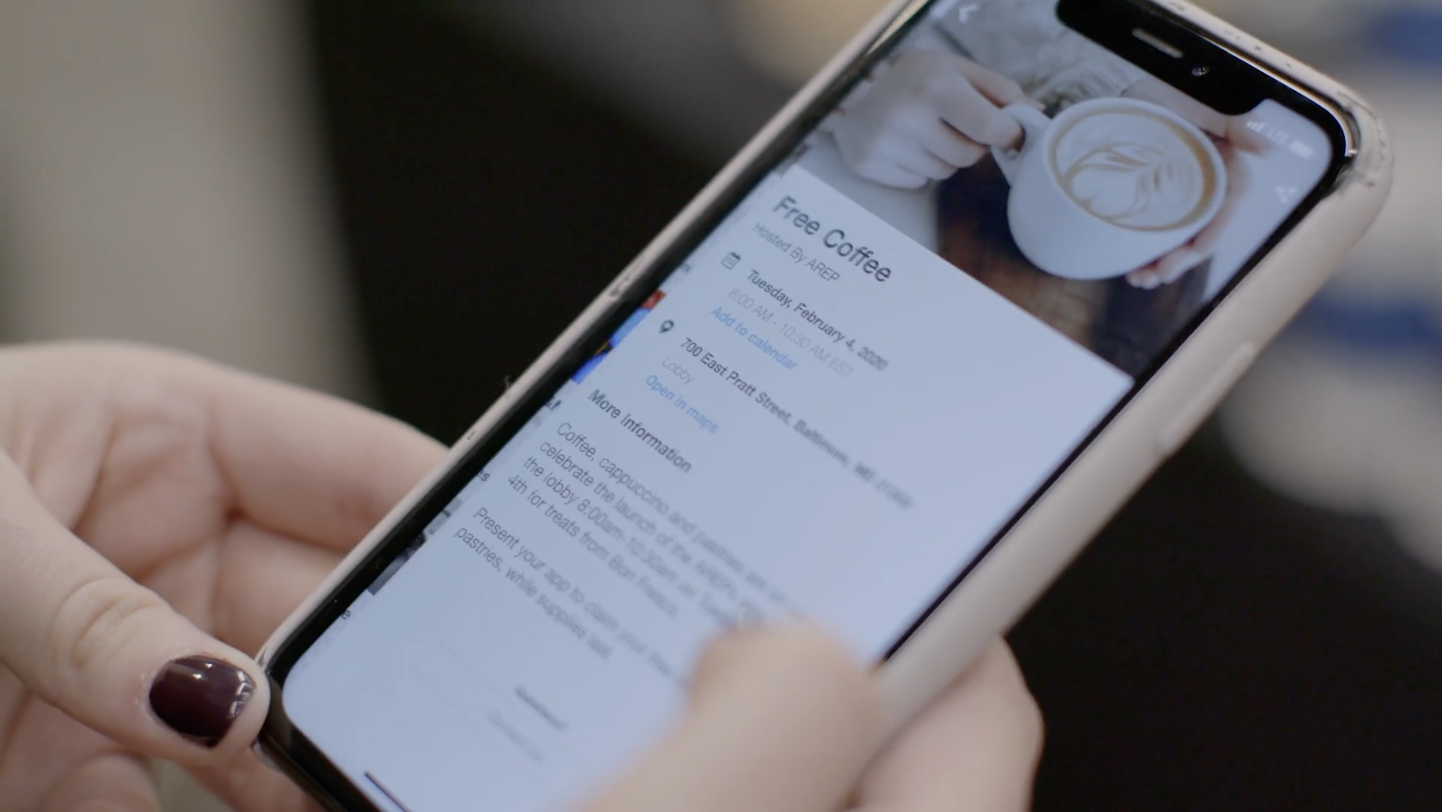Introduction to Workplace Experience Platforms
In the last few years, the workplace has changed significantly. The workplace is no longer just a physical location where people mindlessly go to work every day. Now, regardless of where it is, the workplace is where people go to do their best work. For companies that want to encourage employees to use the in-person office, the workplace will have to meet more employee needs and follow an enhanced employee experience model.
Employee experiences are now directly a result of a company’s overall workplace experience. In order to enhance employee experience, employers need to turn to employee experience platforms. The best employee engagement apps and employee experience apps will have employee experience tools that foster stronger connections between people and place — more specifically, the workplace —while optimizing their investments through data and
insights.
The Importance of Engagement
The Great Resignation revealed interesting insights between what employees want and what employers believe employees want. To attract and retain top talent, employers must develop
empathy for and understand their employees through employee engagement strategies. Engaged employees are happier and more productive, which is why employee engagement technology companies are able to retain more talent. And right now, according to Gallup, only 33% of the American workforce is engaged — leaving the rest actively disengaged (16%) or “just there” (51%).
Organizations need to provide the space, technology, services, and programming to
optimize employee engagement, as well as improve upon company culture by using data to understand the needs of every employee. Engaged employees are productive — and ultimately, more profitable. Fostering a connected culture that enables employees to develop themselves in alignment with the organization is an excellent method of increasing engagement. When employees have purpose, they are willing to put in the extra effort needed for success.
In fact, 72% of employers agree or strongly agree that workplace experience and employee engagement apps will be a critical element of successful offices in the future. Which is why free employee engagement tools and a free employee engagement platform are critical in driving engagement.
The question is, what is employee engagement software?
Employee experience management software includes resources that will help an employee do their best work. This includes employee engagement app features such as communication tools, resource booking, and mobile access. Streamlining and unifying digital tools and capabilities should be a key business imperative for modern workplaces.
Employee Engagement Trends
More than ever, companies are striving to be employee engagement companies. These companies have the best employee engagement software and are top employee engagement survey companies. They also have an effective employee engagement strategy with programs, ideas and initiatives to engage the workforce is more likely to retain top performers, attract new talent, and increase performance throughout the organization.Companies can boost employee engagement by investing in employee engagement platforms.
The top employee engagement companies will have the best employee engagement platforms. For example, Microsoft uses Microsoft Viva, which is an employee experience platform. Microsoft Viva goals to bring together communications, knowledge, learning, resources, and insights in the flow of work. Similar to HqO, Microsoft Viva Topics fosters a culture that empowers employees and teams to be their best from anywhere.
Employee Monitoring (It’s Not What You Think)
The COVID-19 pandemic led a large number of companies to adopt a hybrid work-from-home policy. Some challenges to hybrid working not only come with employee experience platforms, but also remote working apps. As employers begin to use controversial tools such as Microsoft Viva spying, many are wondering about the advantages and disadvantages of employee monitoring.
But, does employee monitoring increase productivity? And when is it appropriate to do?
According to Triton, there are some benefits of employee monitoring. Monitoring can make a worker more productive on the job by cutting down on the number of mistakes made while also allowing for greater, efficient use of one’s time. In addition, the practice could make the workplace safer.
However, monitoring also has drawbacks that contribute to employee turnover and anxiety. Productivity can be negatively affected if worker observation becomes too intrusive. The constant fear of being watched and reprimanded for their behavior or work can cause employees stress and hinder efficiency as a result. Increased nervousness and mistrust of their employer leads to heightened worker turnover. This is why collecting important data and feedback in the right ways — which you can do in an anonymized and aggregated manner with a workplace experience platform — is so important.
There are many advantages and disadvantages of monitoring techniques, which is why employers need to do it respectfully and unobtrusively. However, workplace data and analytics are still critical to giving employees what they need from the workplace — from supporting their performance, to assisting in their well-being, to providing them with amenities, perks, and tools that will keep them happy with their employer.
Technology’s Role in Workplace Experience
Since technology plays such a crucial role in employee and workplace experiences, the workplace technology market has seen significant growth in the past few years — especially in point solutions like hot-desking and room booking. Investing in multiple apps or tools actually poses a significant challenge to hybrid employees and the workplace. It is much more beneficial to invest in one, full end-to-end digital employee experience platform that can consolidate these features into one easy-to-use interface.
The right workplace experience software can help these organizations optimize real estate spend, improve employee productivity, and attract and retain talent. With a workplace experience app, the platform can provide a single, easy-to-use app for employees to manage their workplace experience. The best employee communication apps can also host content and events; facilitate desk, conference room, and parking booking; and collect meaningful insights on workplace sentiment, employee feedback, and an office’s space usage.
It’s no surprise that companies are investing more than ever in technology geared towards improving workplace and employee experiences. According to Forbes, leading organizations will ‘unlock the creativity of their employees and surround them with intelligent technologies such as automation and prediction engines that focus on outcomes, not just financial results.’
Future Tools For Engagement
The past few years merely served as a catalyst and accelerated the adoption of hospitality and technology trends within the workplace through new digital tools for employee engagement and experiences that add value to physical environments.
For a successful future, employers can use free employee survey tools such as an employee satisfaction survey and employee survey software to track program attendance and content engagement in real-time, so they can do more of what works and less of what doesn’t. They can also use a workplace experience app to help their employee engagement survey by collecting ongoing tenant feedback on desired programs and amenities, the quality of previous offerings, and overall tenant satisfaction through tailored poll questions and surveys.
The best employee survey tools will introduce engaging, informed, and non-work related elements to your property, tenants will look forward to returning to the office and connecting with their larger community.
Want to learn more? Download one of our recent guides on workplace experience, and consider requesting a demo.

















